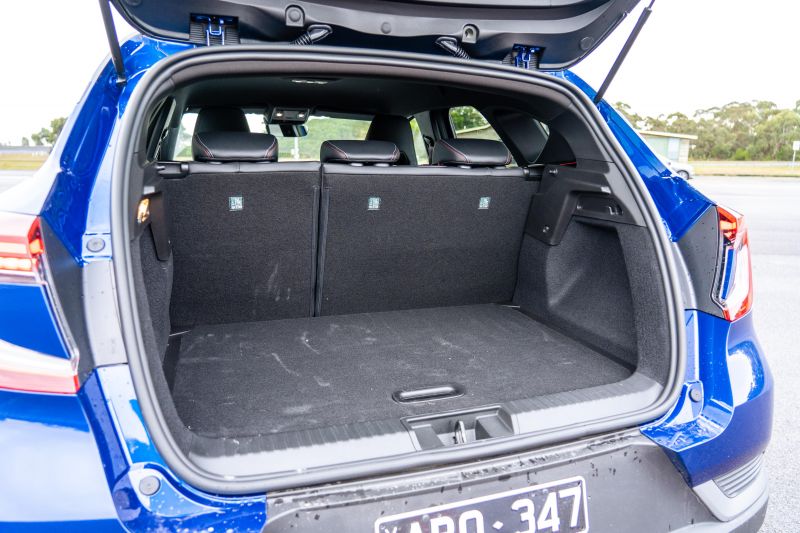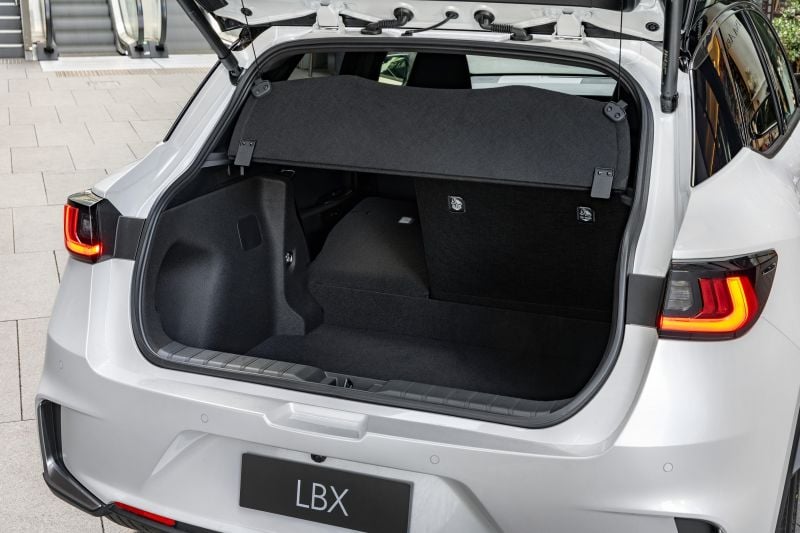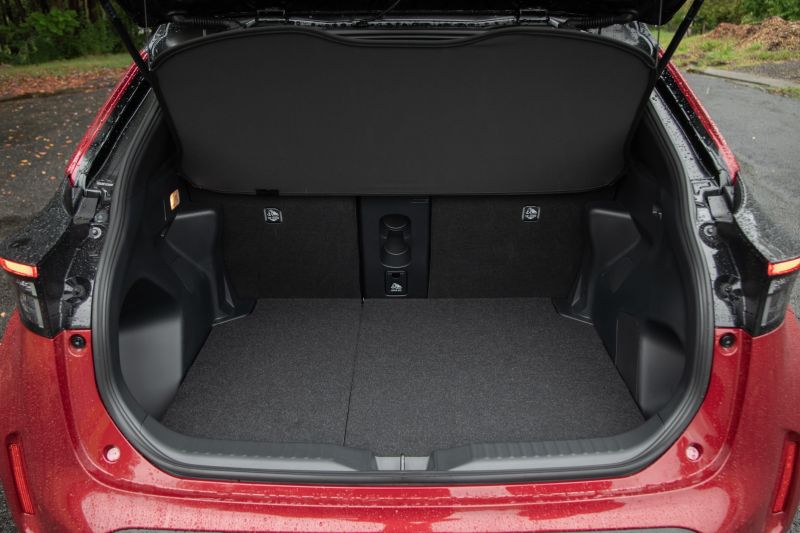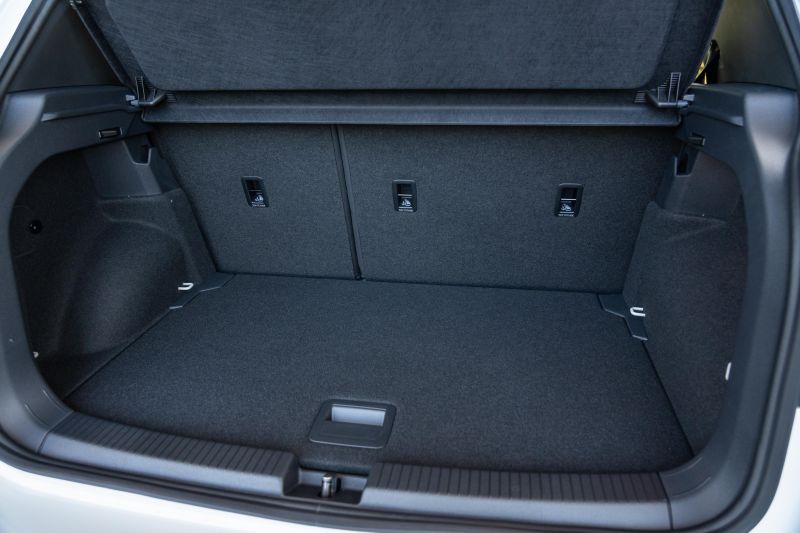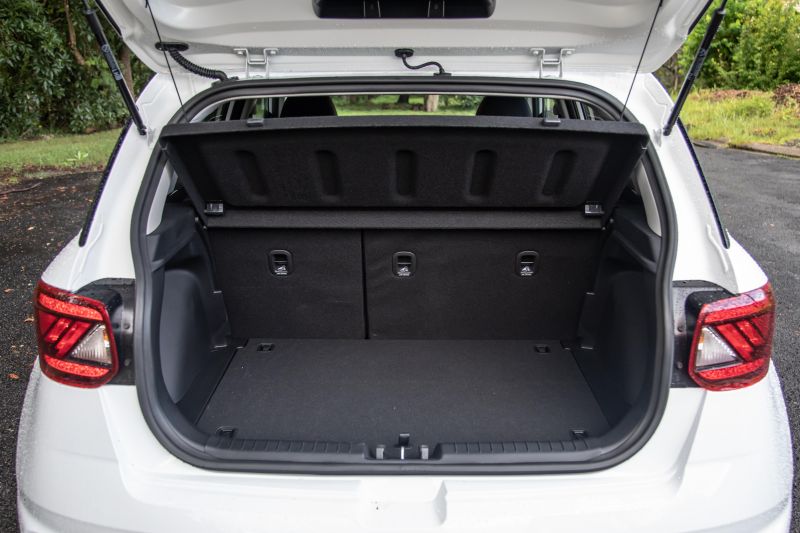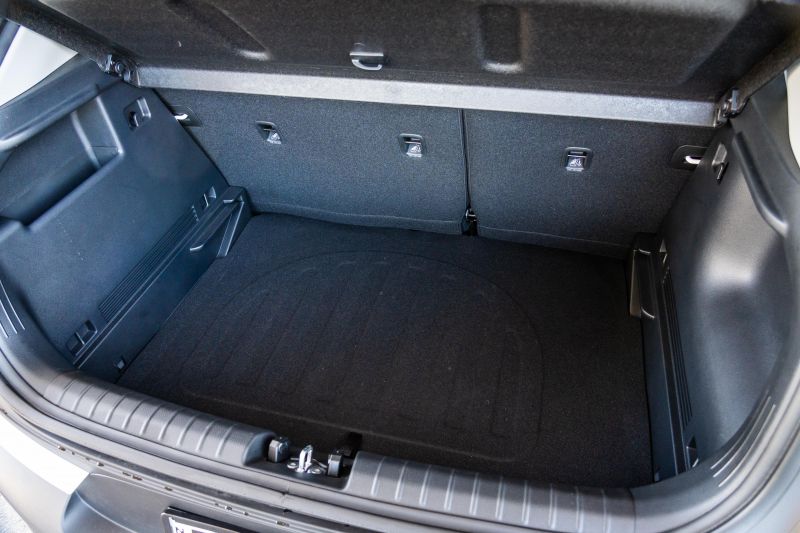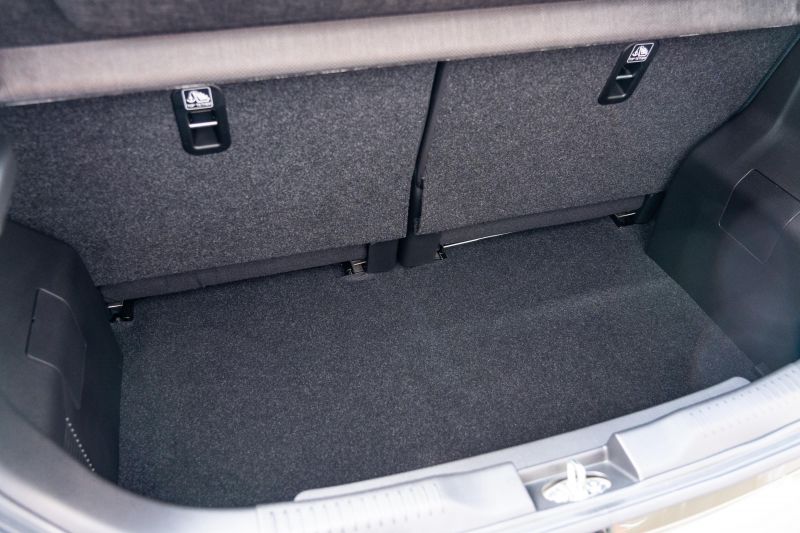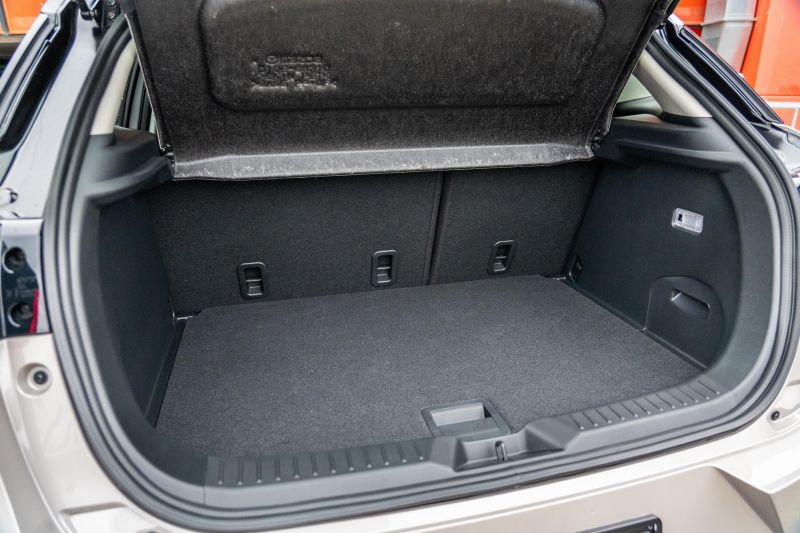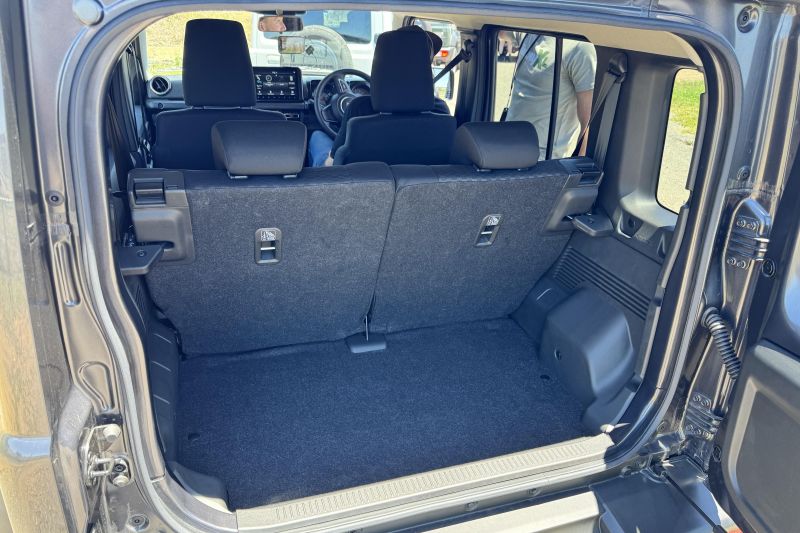Light SUVs are the smallest type of SUV on offer in Australia, and offer an entry point for buyers who value a raised driving position and bang for buck. It’s a popular formula, with over 50,000 sold in 2023. But how do they stack up when it comes to boot space?
These are the cars within the light SUV category in the VFACTS sales charts published by the Federal Chamber of Automotive Industries (FCAI).
We’ve crunched the numbers, using boot capacity figures calculated to the VDA standard where possible for the sake of consistency.
We’ve also measured based on the variant with the most boot space in the range, as some trim or powertrain options may see the figures quoted here cut slightly.
Nissan Juke
The Nissan Juke may sit in the light SUV segment, but it matches many small SUVs when it comes to boot space with 422 litres.
Pricing kicks off from $28,390 before on-road costs, with all Juke variants housing a 1.0-litre turbocharged inline three-cylinder producing 84kW of power and 180Nm of torque.
A seven-speed dual-clutch automatic transmission is paired with that power plant as standard.
The Juke rates highly for towing capacity (1250kg braked), and comes with Nissan’s five-year, unlimited-kilometre warranty.
| Nissan Juke | |
|---|---|
| Seats up | 422L |
| Seats down | 1305L |
| Seat split | 60/40 |
| Spare wheel | Space saver |
BUY: Get in touch with a dealer about a Nissan Juke
MORE: Everything Nissan Juke
Renault Captur
The Renault Captur is the second most expensive car on this list, starting at $33,000 before on-road costs, but it also ties its Alliance sibling for the most boot space.
Interestingly, the Captur and Juke are the slowest-selling cars here – Nissan sold 1256 Jukes last year, while Renault sold 939 examples of the Captur.
All Captur models come with a 1.3-litre turbocharged four-cylinder engine, outputting 113kW of power and 270Nm of torque.
Connectivity was improved in 2023 when Renault introduced wireless Apple CarPlay and Android Auto on all variants.
| Renault Captur | |
|---|---|
| Seats up | 422L |
| Seats down | 1275L |
| Seat split | 60/40 |
| Spare wheel | Space saver |
BUY: Get in touch with a dealer about a Nissan Juke
MORE: Everything Nissan Juke
Lexus LBX
The all-new LBX is Lexus’ take on the Toyota Yaris Cross, and is the most expensive car in this segment.
Starting at $47,550 before on-road costs, the LBX commands a near-$15,000 premium over the base Renault Captur, pitting it up against small SUVs from a price standpoint.
Powered by a 1.5-litre three-cylinder petrol engine paired with an electric motor, all LBX models make 100kW. Efficiency is the selling point here, though – fuel economy is claimed at 3.8L/100km, which is class-leading.
Inside, all LBX models are equipped with wireless Apple CarPlay and Android Auto, a wireless charger, and heated front seats. The 2WD models boast 402L of boot space, while the AWD versions are capped at 315L.
| Lexus LBX | |
|---|---|
| Seats up | 402L |
| Seats down | 994L |
| Seat split | 60/40 |
| Spare wheel | No |
BUY: Get in touch with a dealer about a Lexus LBX
MORE: Everything Lexus LBX
Toyota Yaris Cross
Boot space varies across the Toyota Yaris Cross range, but two-wheel-drive models boast a podium-worthy 390L of capacity.
Now available as a hybrid only, the Yaris Cross wins the efficiency battle here, sipping just 3.8-4.0L/100km depending on the variant.
Notably, the Toyota and its more expensive Lexus sibling are the only cars in this segment to offer hybrid power.
Pricing ranges from $30,000 before on-road costs to $39,000 before on-roads, positioning the Yaris Cross as one of the more expensive light SUVs on offer.
| Toyota Yaris Cross | |
|---|---|
| Seats up | 390L |
| Seats down | 1090L |
| Seat split | 60/40 |
| Spare wheel | Space saver |
BUY: Get in touch with a dealer about a Toyota Yaris Cross
MORE: Everything Toyota Yaris Cross
Volkswagen T-Cross
Volkswagen’s smallest SUV, the T-Cross, comes in fourth with 385L of cargo room.
Just two variants are currently on sale, ranging between $30,990 before on-road costs and $33,490 before on-roads, as Volkswagen prepares to release a facelift in the second half of 2024.
In short, the T-Cross is a lifted and massaged Polo, featuring the same 1.0-litre, turbocharged three-cylinder under the bonnet.
The interior will also be familiar to those who have sat in a Polo, with wireless Apple CarPlay and Android Auto included as part of the package.
| Volkswagen T-Cross | |
|---|---|
| Seats up | 385L |
| Seats down | 1281L |
| Seat split | 60/40 |
| Spare wheel | Space saver |
BUY: Get in touch with a dealer about a Volkswagen T-Cross
MORE: Everything Volkswagen T-Cross
Hyundai Venue
The Hyundai Venue is aimed at buyers on a budget, with a starting price of just $22,500 before on-road costs.
As well as being the most affordable car available in this segment, the Venue is one of the few with the option of a manual gearbox, which is available on the base model.
Powered by a 1.6-litre naturally aspirated four-cylinder engine, the Venue sits at the bottom of the charts for efficiency, consuming 7.2L/100km on average.
| Hyundai Venue | |
|---|---|
| Seats up | 355L |
| Seats down | 903L |
| Seat split | 60/40 |
| Spare wheel | Space saver |
BUY: Get in touch with a dealer about a Hyundai Venue
MORE: Everything Hyundai Venue
Kia Stonic
The Kia Stonic is the only car on this list backed by a seven year, unlimited-kilometre warranty as standard.
Most variants come equipped with a 1.4-litre naturally aspirated four-cylinder, however the top spec GT-Line utilises a 1.0-litre turbocharged three-cylinder paired to a seven-speed dual clutch transmission.
The Stonic is relatively efficient, drinking 5.4L/100km in GT-Line guise which matches the T-Cross.
Like the Hyundai Venue, a manual transmission is available on some variants.
| Kia Stonic | |
|---|---|
| Seats up | 332L |
| Seats down | 1132L |
| Seat split | 60/40 |
| Spare wheel | Space saver |
BUY: Get in touch with a dealer about a Kia Stonic
MORE: Everything Kia Stonic
Suzuki Ignis
The Suzuki Ignis is one of the cheapest new SUVs going around, at $23,490 before on-road costs in base specification.
A truly tiny car, the Ignis measures just 3700mm long and 1660mm wide, with a boot space of 271L in GL guise.
The dimensions remain small under the bonnet – a 1.2-litre naturally aspirated four-cylinder producing 66kW of power and 120Nm of torque powers all models.
The Ignis was the least popular of the two Suzukis in this segment, with 2280 sold in 2023.
| Suzuki Ignis | |
|---|---|
| Seats up | 271L |
| Seats down | 1101L |
| Seat split | 60/40 or 50/50 |
| Spare wheel | Space saver |
BUY: Get in touch with a dealer about a Suzuki Ignis
MORE: Everything Suzuki Ignis
Mazda CX-3
The Mazda CX-3 is comfortably the most popular light SUV on sale in Australia, with 15,776 delivered last year.
Boot space is unlikely a factor in that, given the Mazda has just 264L, although entry-level variants are on the cheaper end of the market at $26,950 before on-road costs.
All versions are powered by the same 2.0-litre naturally aspirated four-cylinder engine paired with an automatic transmission after the range was slimmed down heading into 2024.
The Mazda CX-3 is backed by a five-year, unlimited-kilometre warranty.
| Mazda CX-3 | |
|---|---|
| Seats up | 264L |
| Seats down | 1174L |
| Seat split | 60/40 |
| Spare wheel | Space saver |
BUY: Get in touch with a dealer about a Mazda CX-3
MORE: Everything Mazda CX-3
Suzuki Jimny
Until recently, Suzuki Jimny owners had to settle for just 85L of boot space.
That changed when the XL model was made available, adding two doors and upping cargo room to 211L.
Nevertheless, the Jimny still comes in last on this list. With the seats down the Suzuki is slightly more competitive, offering 1113L of space.
The Jimny also offers the best towing capacity here – 1300kg braked – and comes with a full size spare wheel.
Prices start at $30,490 before on-road costs.
| Suzuki Jimny | |
|---|---|
| Seats up | 211L |
| Seats down | 1113L |
| Seat split | 60/40 |
| Spare wheel | Full size |
BUY: Get in touch with a dealer about a Suzuki Jimny
MORE: Everything Suzuki Jimny


